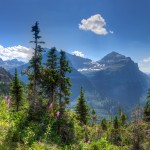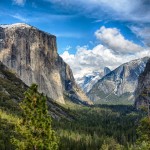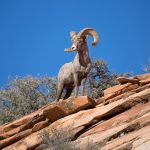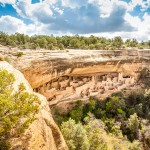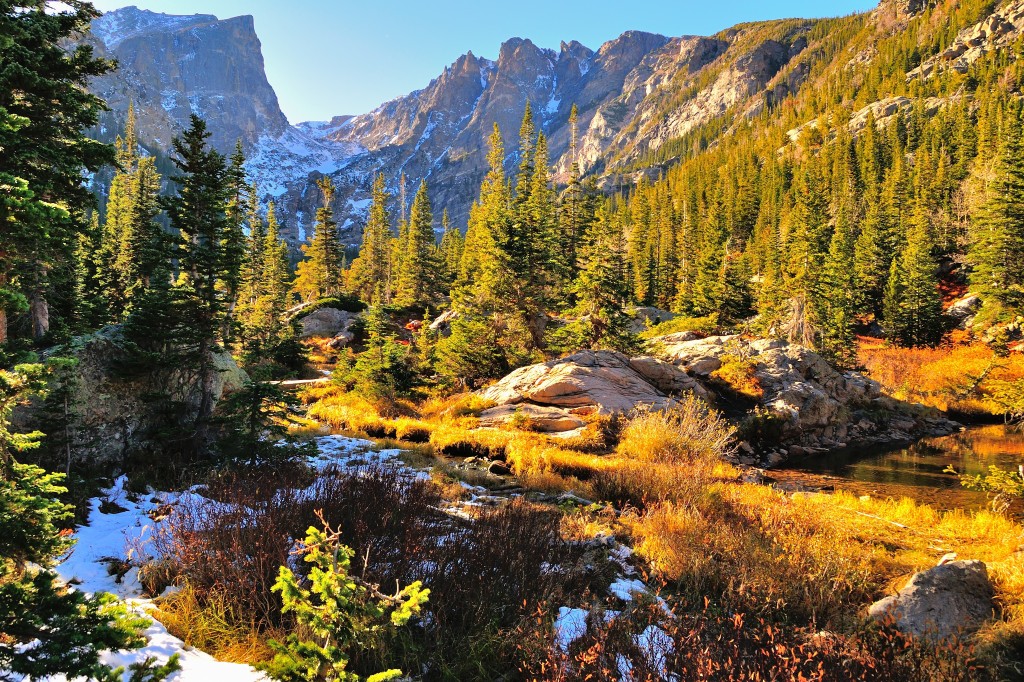Mount Rainier - A Diverse Ecological Landscape
Mount Rainier National Park is both the last and the smallest of the original National Parks founded in the 19th century; it’s by no means the smallest of all of those presently established, being mid-range in terms of size (1). Signed into law in March 1999, it was established to preserve the nature and beauty of the stratovolcano that dominates the area and the surrounding landscape, which contains an area of significant Old Growth Forest (2) – some 91,000 acres; over 97% of the park is now designated wilderness (17). Located in Washington State in the northwest of the country, it is in a clump of important national parks containing thousands of acres of virgin landscape.
The 35sqm park area is dominated by the volcano, which sits roughly in the centre and takes up around one third of park proper; this means it has varied and severe elevation in places which promotes important plant and animal biodiversity. Mount Rainer itself is the highest point in the Cascade Range and is easily visible from the city of Seattle (3). The landscape has a diverse ecology from temperate forest in the valleys to subalpine meadow on the slopes. It’s also important geologically and to climate scientists due to the glacial landscapes.
In 1997, the park received extra recognition when it was declared a National Historic Landmark, a designation that recognises monuments, areas and even objects as being “historically significant”. In this case, it was the building architecture of the park (4).
History of Mount Rainier National Park
The study of archaeological remains in the Park has shown around 900 years of occupancy (5), possibly continual occupancy for around 3500 years (6, p12). Until around 10,000 years ago the volcano was glacial, meaning it wasn’t particularly conducive to long-term settlement except in the valleys below (we have limited evidence of seasonal occupation in these areas). Once the glaciers retreated, we see human populations moving higher into the area and onto the slopes of Mount Rainier. The climate changed, bringing an ecology similar to that seen on the sub-alpine slopes of the volcano we see today (5). This was the beginning of expansion of human population in the area, and around the Cascades in general. Early investigations revealed that occupancy was at its heaviest between 8500 and 4000 years ago (6). Mount Rainier has contributed a great deal of understanding towards our knowledge of slope and valley settlement in North America (8).
We have a good understanding of the geological history of Mount Rainier, including data on eruptions of the last 12,000 years or so – anything before that is a little vague (7). We do know that it has not erupted properly for at least 500 years, with some intermittent steam plumes and minor eruptions since.
Little is known of the recent history of the park and it was very late before we saw the arrival of pioneers (7) to map and explore the Mount and its valleys – perhaps even as late as 1890, just a few years before it became the next National Park. We know a British explorer spotted the Mount in 1792 while passing through (9), and that it became a National Park on the recommendation of the 19th century pioneers. When it was signed into law in 1899, it was then the fifth National Park in the US (now the fourth as Mackinac was downgraded just 20 years after its foundation).
Flora of Mount Rainier National Park
The upland slopes and valleys of Mount Rainier are home to many species thanks to the topographical variation being conducive to ecological diversity. There are lowland forest (over half the landscape), subalpine woodland, subalpine meadow and glacier – over half of this latter landscape is permanently covered in snow and ice. The lowlands contain miles of wild flower beds – all of this within the 35sqm of the park (10); mostly, visitors travel to the park to see its extensive wildflowers (9) but it is also home to many fungi.
The flowers may be the big draw for plant enthusiasts, but it is home to some 964 native plants that rely on the delicate ecosystem to survive (10). This is why Mount Rainier National Park is so important to climate change research, because even a small change to this landscape could have potential knock-on effects for the wider landscape and the total ecosystem of the Park.
The plant life of the meadows of the National Park is broken down into five general categories, and the subalpine region has four categories (11). One of the most common sights you will see in Old Growth Forest is the Fairy Slipper (a type of orchid) (10) which grows against the mosses and damp zones which are dependent on seasonal melting.
Heather is also an important part of the ecosystem in the meadows; it is believed that the native species present in Mount Rainier National Park have grown in the area for some 10,000 years. This means that the heather is not only an important part of the modern ecology, but also to the historic botanical record and thousands of species that call the park home (11).
Flora Conservation Issues of Mount Rainier
There are a number of conservation issues at Mount Rainier National Park, many of which are common to all natural landscapes. Despite that most of the park is designated wilderness, it is now home to some invasive plant species that spread rapidly and have proven difficult to eradicate. Of particular note is the common dandelion which is native in most temperate areas of the world. Though it is native to North America, and particularly the western states of the US, it is not native to Mount Rainier National Park and is considered an invasive species. Many sightings have been recorded in the glacier basin (12) and ecologists are doing their part to remove or control the growth of this particularly difficult-to-eradicate weed.
The National Park Service observers have also identified a potential problem in the spread of Yellow Hawkweed. It too is not native to the park (in fact, it is not even native to North America but to continental Europe (13)), but is of particular concern over how quickly it spreads, how easily it dominates even hardy native plants, and the potential to hybridise with some native species (12). Other invasive species include Ox Eye Daisy (which in terms of area covered is the biggest invasive threat to the ecology of the park), white clover and wall lettuce – the latter two are more easily managed but must be monitored nonetheless.
The waterways of the park are delicate for both plant and animal life and therefore are a significant part of the Service’s conservation efforts (16). If water quality or the levels drops, if routes change, if glaciers melt later or do not thaw at all, if lakes dry up then several native plant species may become threatened and those already threatened could disappear from the park entirely. As the landscape is glacial, it is fully understood that water levels and quality are particularly delicate at Mount Rainier National Park. Some species rely on summer melting from the mountain slopes and the warmer glacial regions, which could alter the ecology if that pattern changes and shows a knock-on effect.
Fauna of Mount Rainier National Park
Just as the flora represents four distinct zones, so do the animal species; the habitat ranges from mountain valley to a 13,000ft elevation, which means you can expect to see a great deal of variation if you intended to hike them. Birds are especially prevalent, representing both native and migrating species. The most common animal species you’ll see include (14):
- The Colombian Black Tailed Deer
- Douglas Squirrels
- The Common Raven
- Elk
- Black Bears
- Mountain Goats
Due to the wetland nature of much of the lower valleys and areas surrounding Mount Rainier itself, a wide range of insects and other invertebrates may be found in the park (15). Due to conservation issues and fragile populations, you will find that a great many of these are protected –even when not directly threatened – as they are important to the wider ecology of wetlands and lowlands in general (14).
Most visitors are surprised to find rodents high up in the alpine zone, especially in areas blanketed in snow most of the year. However, it is home to marmots and pika (the former hibernates for six months of the year making a siting relatively rare). Mid-size mammals include skunk, cougar, weasels and bobcats may be seen at the lower levels (15).
Fauna Conservation Issues of Mount Rainier
Any threat to the water system is invariably a threat to all species that live in the park (16). We can also say that climate change is already putting pressure on the ecosystems and the species that live there (17). With steep, often rugged terrain, the area is sensitive to even minor fluctuations in the water supply. We know that the park has its own microclimate, with much of the rainfall generated from ground moisture and ice melt around the mountain. In 2006, the park suffered severe flooding – receiving 18” of rain in just 36 hours (18). The result was that the park closed for 6 months while the NPS rebuilt access roads and facilities such as picnic and campsites. Clean-up may have taken a lot less time, and the park suffered a lot less damage, had the grounds not suffered almost a week of persistent drizzle leading up to the flood. As the effects of climate change take hold, the National Park Service is expected to continue to monitor water levels to come up with a contingency plans against further flooding. Eight species of fish within the park are threatened (14, p24) and native insects are under threat from introduced species which are brought in by firewood transported from other areas of the state or from elsewhere in North America (20). Eggs can lay dormant or get released prior to burning so the park has a policy of “Buy It Where You’ll Burn It”.
Most at risk is the Cascade Fox – though climate variation, hunting or loss of habitat, which are typically the reason for threatened animal species (especially carnivores) are not the issue with this protected species. There have been many reports of the animal wandering near roadsides, numerous carcasses have been found and around 75% of those struck by a car will die (19) – Road Traffic Accidents are often the forgotten threat to wildlife. Also under threat is the Fisher, a type of weasel that was once native to the area but has seen massive decline. There are now efforts to increase their numbers (22).
Archaeological Conservation of Mount Rainier
Extensive archaeological material remains include flint arrowheads, hearths, post holes indicating buildings (6, P103) and other material we typically expect to find on prehistoric sites. Evidence of animal husbandry and a degree of plant processing (6, p57) has been observed and recorded too. Surveying began in the early 1960s and have so far been small scale and limited, working with local tribes to understand the cultural importance of the volcano and its surrounding landscape. Ethnic and cultural sensitivity can be a concern in these cases. Thankfully, all groups have been working together so far at Mount Rainier to understand the importance of the site. We know that early Native American tribes occupied the site seasonally for most of its prehistoric occupation (21), to hunt, collect wood for burning, herbs and food.
We do know that there was a population using the caves around 1200 years ago. It wasn’t until the 1990s when we saw the dawn of more organised and extensive research to piece together the human history of Mount Rainier and its valleys (6, p13). Generally, archaeology in the ground faces many threats including:
- Damage from animal foraging
- Damage from human excavation (digging for plants, animals or metal detecting)
- Damage to the ecology, resulting in loosening ground soil (climate change, deforestation)
- Damage from plant roots – which can cause a conflict of interest between conservation groups
These are of particular concern at Mount Rainier because the study of human antiquity within the park is still relatively young. However, what is less understood by the general population (but certainly understood by National Park Service employees who work with archaeology), is how much we learn about our ecological past from extant remains (23) – experience and knowledge we may lose if such remains are damaged. We can trace when animals went extinct and why, and also what interactions human populations may have had in that – it can also force us to ask questions about human predation and the impact that had in antiquity (8, p15).
Ongoing Conservation Challenges
As it stands, the biggest threat to Mount Rainier National Park is those associated with climate change. The park has glacial landscape and we fully aware of the problems caused by ice melting too early or not forming at all over the colder months. As we adapt to a changing climate, we can expect Mount Rainier National Park to experience repeats of the flood in 2006. With a loss of growth of ice, we may also see periods of drought – both of which we know can devastate ecologies and put already endangered landscapes at further risk. The waterways of Mount Rainier are under special protective measures and the National Park Service is responsible for controlling water quality as well as monitoring water levels across the park.
Concerns over burning the wrong type of wood has been prevalent enough for the NPS to offer guidance to campers (20) to promote good practice and minimize the risk of invasive plant and animal species –seeds and eggs are the most common transportation method for non-native flora and fauna. As with any other park, there are a number of threatened plant and animal species already within the park and problems with invasive species which the NPS is addressing.
Finally, the important work on the archaeology of Mount Rainier National Park and others like it means that protection of our cultural and prehistoric past is just as important to the integrity of protected landscapes as the waterways and plant and animal species that live there. There are laws protecting archaeological remains that validate the reasons for this (24); it’s important to note that it is a crime to remove Federally Protected material, and where there are sensitive archaeological remains, protection from development just as it would be if a rare, protected animal species was present.
Sources
(1) http://www.fs.fed.us/pnw/pubs/pnw_rb197.pdf
(2) http://www.npca.org/parks/mount-rainier-national-park.html
(3) http://www.nps.gov/mora/learn/historyculture/archaeology.htm
(4) http://volcanoes.usgs.gov/volcanoes/mount_rainier/mount_rainier_geo_hist_76.html
(5) http://www.nps.gov/mora/learn/historyculture/upload/AIW-Burtchard2007.pdf
(6) http://www.rainiervisitorguide.com/rainier-history-1.html
(7) http://www.nps.gov/mora/learn/nature/plants.htm
(8) http://www.nwparkscience.org/node/895
(9) http://www.nps.gov/mora/learn/nature/animals.htm
(10) http://www.nps.gov/mora/learn/nature/waterquality.htm
(11) http://www.nps.gov/mora/learn/nature/climatechange.htm
(12) http://www.nps.gov/mora/learn/news/november-2006-flood-old-page.htm
(13) http://www.nps.gov/mora/planyourvisit/buy-it-where-you-burn-it.htm
(14) http://www.nps.gov/mora/learn/historyculture/archaeology.htm#CP_JUMP_204136






